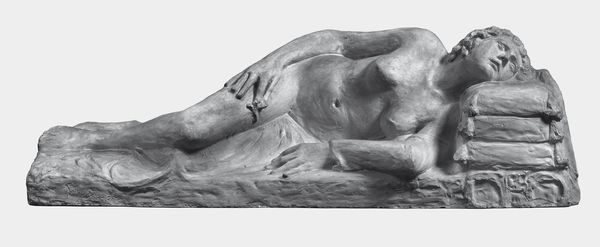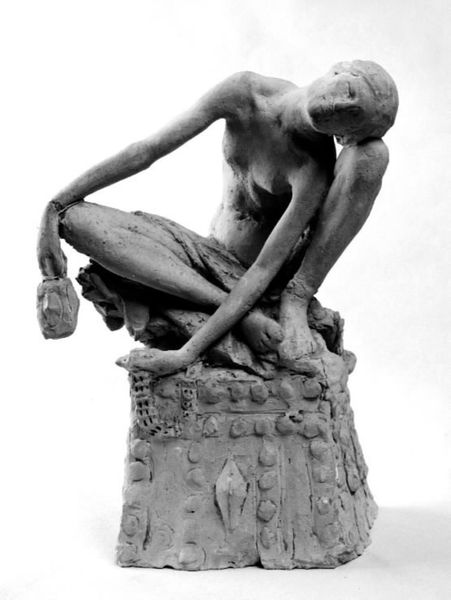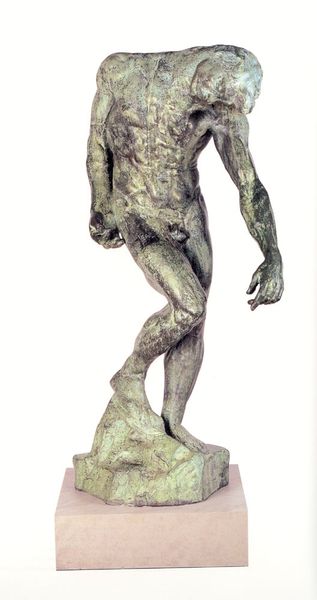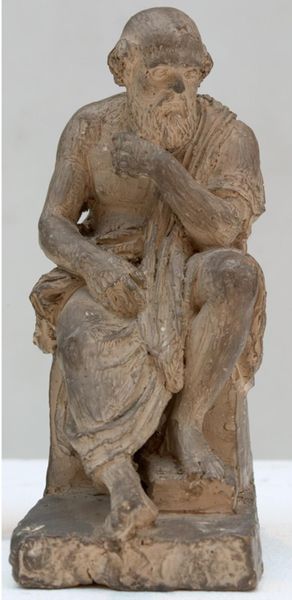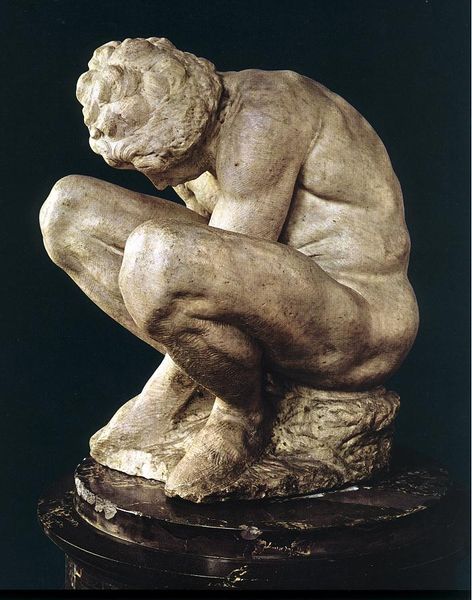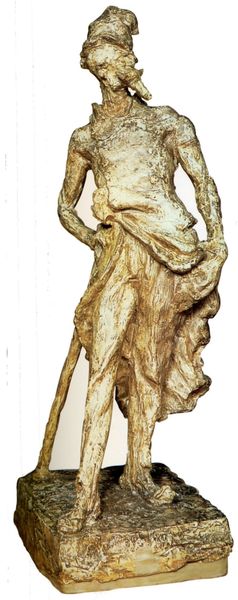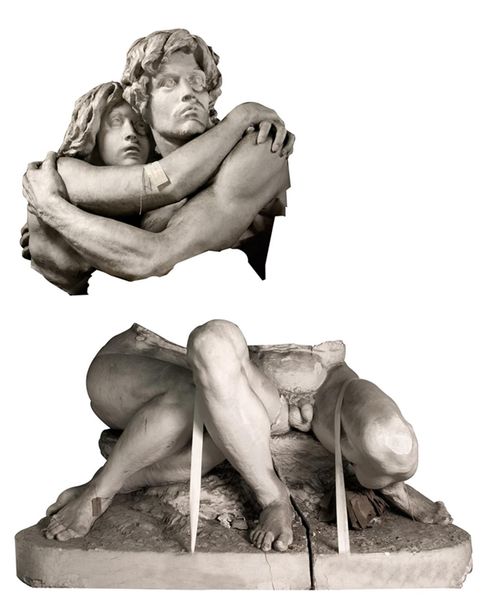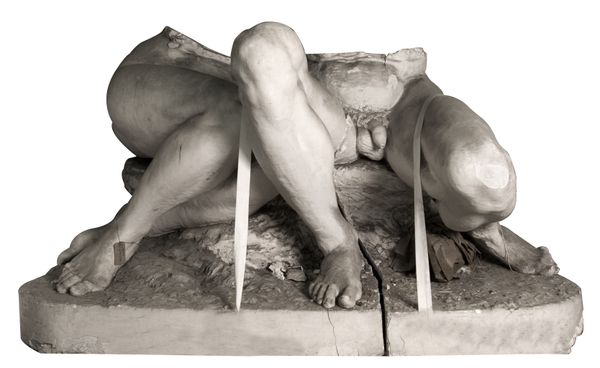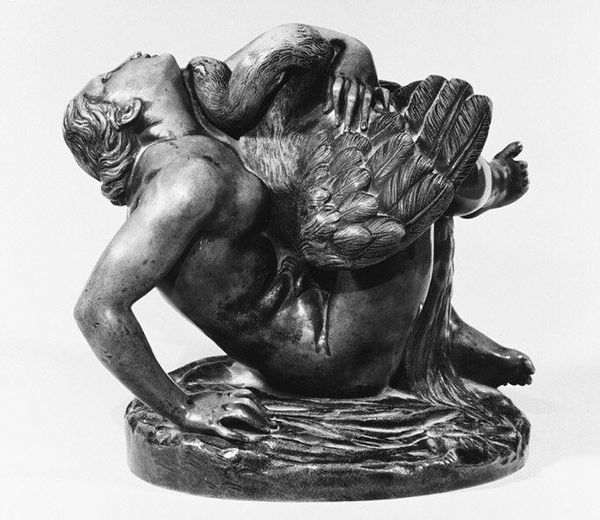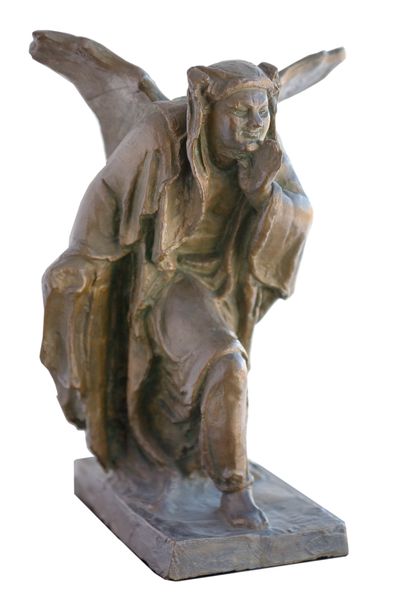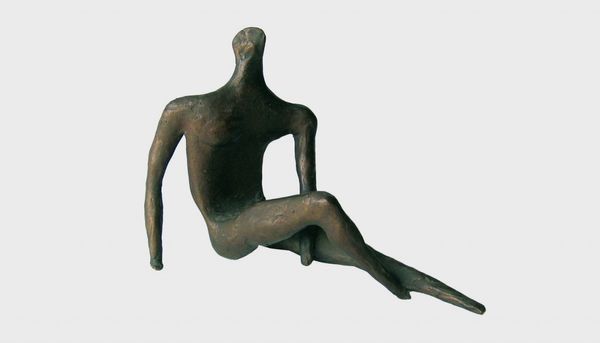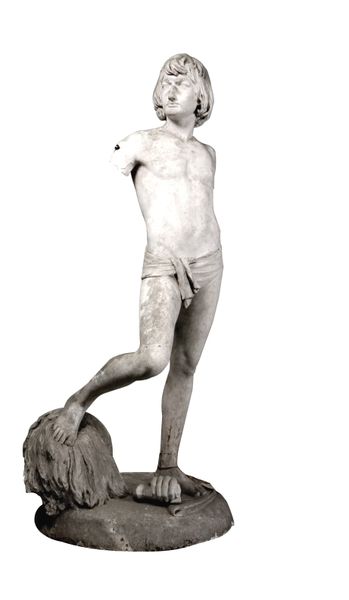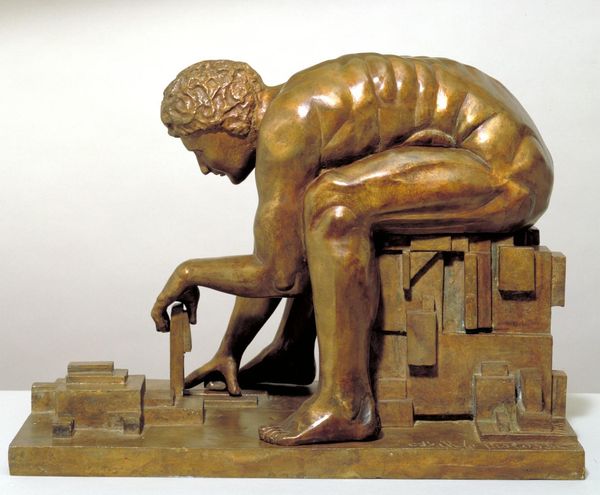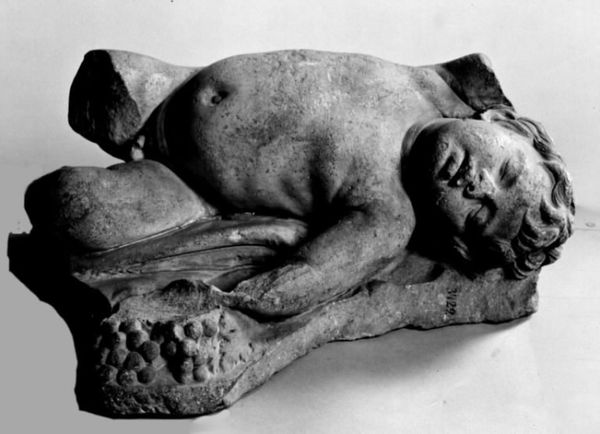
sculpture, marble
#
portrait
#
neoclacissism
#
statue
#
sculpture
#
sculptural image
#
figuration
#
sculpture
#
history-painting
#
marble
#
nude
#
statue
Copyright: Public domain
Editor: This is Canova's *The Penitent Magdalene*, sculpted in marble around 1796. The downward gaze and fragile form create a deeply melancholic feeling. What do you see in this piece, beyond the initial sadness? Curator: I see a careful orchestration of symbols. The skull, of course, represents mortality, a constant companion in penitence. But notice how Mary Magdalene isn't just passively accepting death; she’s actively meditating on it. Her hands clasp what appears to be a broken flute or recorder, representing worldly pleasures silenced, actively renounced. Editor: That’s fascinating. I hadn’t considered the broken flute. Does that tie into the Neoclassical style? Curator: Yes, it absolutely does. Neoclassicism often revisited classical allegories. Here, the flute is reminiscent of a Greek *aulos*, but its broken state subverts the celebratory associations, recasting music as a lost joy. More subtly, the figure recalls classical depictions of mourning figures in Roman funerary art. Do you see how this creates layers of meaning? Editor: I do. So, it’s not just about religious piety, but about how cultural memory shapes our understanding of repentance itself. How potent the symbolic combination. Curator: Precisely. The statue is heavy with the weight of not just Mary Magdalene's personal remorse, but centuries of cultural understanding attached to her image, and to instruments of both mourning and pleasure. And notice the gaze. What’s reflected back on us is the silence after the music fades. Editor: Thinking about those multiple layers really enhances my appreciation. Thank you! Curator: Indeed, exploring visual culture always deepens understanding of even the most sorrowful work.
Comments
No comments
Be the first to comment and join the conversation on the ultimate creative platform.
